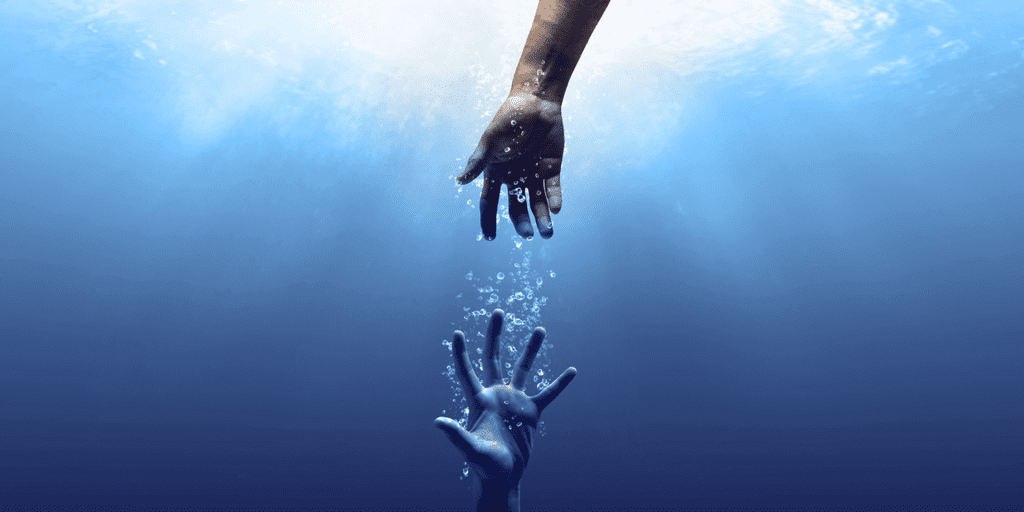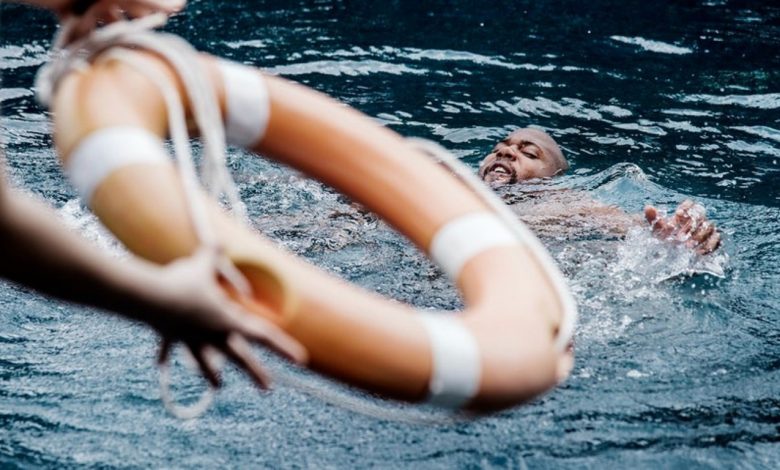Water safety and drowning prevention are of utmost importance, as drowning is a leading cause of death worldwide. Drowning can happen to anyone, regardless of age or swimming ability, and it is crucial to understand the risks and take necessary precautions to prevent such incidents. This article aims to provide a comprehensive overview of drowning, including its definition, statistics, different types, common causes, prevention strategies, the importance of water safety education, signs and symptoms to look out for, CPR and first aid techniques, long-term effects on survivors, impact on families and communities, and the need for increased awareness and resources to combat drowning.
What is drowning and how does it happen?
Drowning is the process of experiencing respiratory impairment due to submersion or immersion in liquid. It occurs when a person’s airway becomes blocked by water or other fluids, preventing the intake of oxygen. Drowning can happen in various settings such as swimming pools, lakes, rivers, bathtubs, or even buckets of water.
Drowning typically occurs in four stages: breath-holding, water swallowing, choking or gasping for air, and unconsciousness. When a person is submerged in water, their body instinctively tries to hold its breath. However, as the oxygen supply depletes and carbon dioxide builds up in the bloodstream, the body triggers a reflex to breathe. This reflex causes the person to swallow water instead of air, leading to choking or gasping for air. Eventually, if the person is unable to reach the surface or get help, they lose consciousness and drown.
The statistics: how many people die from drowning each year?
Drowning is a global public health issue that claims the lives of thousands of people each year. According to the World Health Organization (WHO), an estimated 236,000 people die from drowning annually worldwide. This makes drowning one of the top 10 causes of death for children and young people in every region of the world.
In the United States, drowning is the leading cause of unintentional injury death among children aged 1 to 4 years old. On average, about 350 children in this age group drown each year. Additionally, drowning is the second leading cause of unintentional injury death for children aged 5 to 14 years old, with an average of 400 deaths annually.
The different types of drowning: dry drowning, secondary drowning, and more.

While most people are familiar with the concept of drowning, there are different types that may not be as well-known. Two such types are dry drowning and secondary drowning.
Dry drowning occurs when a small amount of water enters the airway and causes the vocal cords to spasm, leading to difficulty breathing. This can happen even after a person has left the water. Symptoms of dry drowning may include coughing, difficulty breathing, chest pain, and extreme fatigue. It is important to seek medical attention if these symptoms occur after a water-related incident.
Secondary drowning, on the other hand, occurs when water enters the lungs and causes inflammation or swelling. This can lead to fluid buildup in the lungs over time, resulting in respiratory distress. Symptoms of secondary drowning may include persistent coughing, shortness of breath, chest pain, and extreme fatigue. Like dry drowning, it is crucial to seek medical attention if these symptoms occur after a water-related incident.
The most common causes of drowning and how to prevent them
Drowning can occur due to various factors, but some common causes include lack of swimming ability, lack of barriers or supervision around water bodies, alcohol consumption while swimming or boating, and failure to wear life jackets or other flotation devices.
To prevent drowning incidents, it is important to follow these safety tips:
- Learn to swim: Enroll yourself and your children in swimming lessons to develop essential water safety skills.
- Supervise children: Always keep a close eye on children around water, even if they know how to swim. Designate a responsible adult to actively supervise children in and around water.
- Install barriers: Install fences, gates, and pool covers to prevent unsupervised access to swimming pools or other bodies of water.
- Wear life jackets: Ensure that everyone wears properly fitted life jackets when boating or participating in water activities.
- Avoid alcohol: Alcohol impairs judgment, coordination, and reaction time, increasing the risk of accidents and drowning.
- Learn CPR: Knowing cardiopulmonary resuscitation (CPR) can save lives in emergency situations. Take a CPR course to learn the necessary skills.
The importance of water safety education for children and adults
Water safety education is crucial for both children and adults to prevent drowning incidents. Teaching children about water safety from an early age helps them develop essential skills and knowledge to stay safe in and around water. This includes teaching them how to swim, recognizing potential dangers, understanding the importance of supervision, and knowing what to do in an emergency.
For adults, water safety education is equally important. Many adults may not have had the opportunity to learn how to swim or may have forgotten their swimming skills over time. By providing access to swimming lessons and water safety education programs for adults, we can empower them with the knowledge and skills needed to keep themselves safe in aquatic environments.
Parents and caregivers play a crucial role in water safety education. They should actively supervise children around water, teach them about potential dangers, and ensure they have the necessary swimming skills. Additionally, parents should lead by example by practicing safe behaviors themselves, such as wearing life jackets and avoiding alcohol while swimming or boating.
The signs and symptoms of drowning: what to look out for
Recognizing the signs and symptoms of drowning is essential for early intervention and rescue. Some common signs of drowning include:
- Head tilted back with mouth open
- Eyes glassy and empty, unable to focus
- Inability to speak or call for help
- Gasping for air or hyperventilating
- Arms extended to the sides or pressing down on the water in an attempt to stay afloat
- Legs vertical in the water, unable to kick
- Inability to move or swim towards safety
It is important to note that drowning can be silent and may not involve splashing or calling for help. This is known as “silent drowning” and can occur quickly and without warning. Therefore, it is crucial to actively supervise individuals in and around water and be vigilant for any signs of distress.
How to perform CPR and first aid for drowning victims
In the event of a drowning incident, immediate action is crucial. If someone is unresponsive in the water, follow these steps:
- Call for help: Dial emergency services or ask someone nearby to call for help.
- Remove the person from the water: If it is safe to do so, remove the person from the water while supporting their head and neck.
- Check for breathing: Tilt the person’s head back slightly and look, listen, and feel for breathing. If they are not breathing or only gasping, begin CPR immediately.
- Perform CPR: Start with chest compressions by placing the heel of one hand on the center of the person’s chest, between the nipples. Place your other hand on top of the first hand and interlock your fingers. Push hard and fast, aiming for a rate of 100-120 compressions per minute. After 30 compressions, give two rescue breaths by tilting the person’s head back slightly, pinching their nose shut, and covering their mouth with yours. Give two breaths lasting about one second each, watching for the chest to rise.
- Continue CPR until help arrives: Continue performing cycles of 30 compressions and two breaths until emergency medical services arrive or the person starts breathing on their own.
The long-term effects of near-drowning incidents on survivors

Near-drowning incidents can have significant physical and psychological effects on survivors. Physically, survivors may experience lung damage, brain damage due to lack of oxygen, and other injuries sustained during the incident. These injuries can lead to long-term health complications and disabilities.
Psychologically, near-drowning incidents can cause post-traumatic stress disorder (PTSD), anxiety, depression, and other mental health issues. Survivors may experience fear or anxiety around water, have nightmares or flashbacks of the incident, and struggle with feelings of guilt or survivor’s guilt.
It is important for survivors to receive appropriate medical care and support to address both their physical and psychological needs. Rehabilitation programs, counseling, and support groups can help survivors cope with the long-term effects of near-drowning incidents.
The impact of drowning on families and communities
Drowning incidents have a profound emotional impact on families and loved ones. The loss of a loved one due to drowning can cause immense grief, guilt, anger, and a range of other emotions. Families may also face financial burdens due to medical expenses, funeral costs, and loss of income if the victim was a primary earner.
Communities are also affected by drowning incidents. These incidents can lead to increased fear and anxiety around water activities, decreased participation in water-related recreational activities, and a loss of trust in safety measures at public swimming areas. Additionally, communities may experience a strain on emergency services and resources due to the need for rescue operations and medical care.
The need for increased awareness and resources to combat drowning
Raising awareness about drowning prevention is crucial to combat this global public health issue. By educating individuals about the risks and providing them with the necessary knowledge and skills, we can reduce the number of drowning incidents and save lives.
Resources for drowning prevention include swimming lessons, water safety education programs, CPR training, and the implementation of safety measures such as pool fences, lifeguards, and life jackets. Governments, organizations, and communities should work together to ensure that these resources are accessible to all individuals, regardless of their socioeconomic status or geographical location.
Conclusion
Drowning is a preventable tragedy that claims the lives of thousands of people each year. By understanding the risks, recognizing the signs and symptoms of drowning, and taking necessary precautions, we can reduce the number of drowning incidents and save lives. It is crucial to prioritize water safety education for both children and adults, provide resources for drowning prevention, and raise awareness about the importance of water safety. Together, we can make a significant impact in preventing drowning incidents and ensuring the safety of individuals in and around water.
